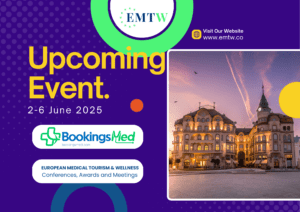Telemedicine workshop lesson plan:
After the rise in the prevalence of COVID-19, the aim of every healthcare provider was to cater to its patients using methods that do not require in-person visits. Telemedicine solutions helped provide necessary care to the patients by allowing them to communicate to a healthcare provider using a telecommunication platform
Why is Telemedicine Important?
Telemedicine is a new concept in the healthcare sector but due to the recent rapid technological advancements, it has been growing expeditiously. The purpose of telemedicine is to improve a patient’s health by enabling two-way, real-time communication between a patient and a healthcare practitioner at a distant site
Initially, the aim of creating telemedicine providers was to treat and cater to the patients living in remote areas where there was a shortage of medical facilities. While it is still being used to address these problems, it’s now also becoming a tool of convenience for the patients.
Objectives
- Improving patient care
- Improving access to medical care for rural and deprived areas 3.
Better access to doctors for consultation - Improving rehabilitation services in health tourism
- Providing facilities for doctors to direct automatic examinations
- Reducing the cost of medical care
- Creating medical care services (on a wide geographical and
population level) - Reducing the transfer of patients to medical centers
- Creating a managed care environment in hospitals and medical
centers - On the ship, inside the plane
- War zones
- Far prisons
- Improving patient care through video conferencing
- Crisis management in the health sector
- Control of chronic diseases
- Resource management in the transportation sector
Health & Safety:
Telemedicine services
- Telemedicine in prevention, diagnosis and treatment
- Telemedicine workshop lesson plan
- Remote monitoring
- Health crises and telemedicine Practical – clinical experiences of telemedicine • Telemedicine workshop lesson plan and self-care
- The four main branches of telemedicine (radiotherapy, psychiatry, pathology and dermatology)
Policymaking, management and economics of telemedicine
Practical experiences of implementing telemedicine
- Telemedicine regulations, standards and
guidelines - Telemedicine workshop lesson plan.
- Legal, ethical, social, cultural and security aspects of telemedicine
- Relationships of caregivers, providers, consumers and beneficiaries in telemedicine
- Telemedicine and equitable access to health services
- Change management in the transition to telemedicine (investment, provision of infrastructure and commercialization)
- Risk management in telemedicine
- Factors of success, safety and sustainability of the telemedicine platform
- The impact of telemedicine on value-based care
- The role of telemedicine in strengthening the referral system
- Payment and reimbursement mechanisms in telemedicine
- Economic evaluation of telemedicine, familiarization with basic issues and fundamental principles in telemedicine
Telemedicine infrastructure
- Feasibility studies for the development of telemedicine
- Telemedicine workshop lesson plan
- Challenges and opportunities of telemedicine development
- Hardware, software and telecommunication network
- Empowerment of telemedicine providers and consumers
- Familiarity with the required equipment
Application of new information technologies in telemedicine
Application of robots in telemedicine
- Artificial intelligence in telemedicine
- Companion health in telemedicine
- Telemedicine workshop lesson plan
- Cloud computing in telemedicine
- Biosensors in telemedicine
- Other new information technologies in telemedicine, necessary technologies for the implementation of telemedicine
Telemedicine in health tourism
- Information transmission
- Transparency and effective communication
- Secure customer affairs management
- Secondary diagnosis and treatment methods
- Telemedicine workshop lesson plan
- Rehabilitation activities and remote care
Related Posts
Prevalence of COVID-19, the aim of every healthcare provider was to cater to its patients using methods that do not require in-person visits. Telemedicine solutions helped provide necessary care to patients by allowing them to communicate with a healthcare provider using a telecommunication platform
Why is Telemedicine Important?
Telemedicine is a new concept in the healthcare sector but due to the recent rapid technological advancements, it has been growing expeditiously. The purpose of telemedicine is to improve a patient’s health by enabling two-way, real-time communication between a patient and a healthcare practitioner at a distant site
Initially, the aim of creating telemedicine providers was to treat and cater to patients living in remote areas where there was a shortage of medical facilities. While it is still being used to address these problems, it’s now also becoming a tool of convenience for patients.
Objectives
- Improving patient care
- Improving access to medical care for rural and deprived areas 3.
Better access to doctors for consultation - Telemedicine workshop lesson plan
- Improving rehabilitation services in health tourism
- Providing facilities for doctors to direct automatic examinations
- Reducing the cost of medical care
- Creating medical care services (on a wide geographical and
population level) - Reducing the transfer of patients to medical centers
- Creating a managed care environment in hospitals and medical
centers - On the ship, inside the plane
- War zones
- Far prisons
- Improving patient care through video conferencing
- Crisis management in the health sector
- Control of chronic diseases
- Resource management in the transportation sector
Health & Safety
Telemedicine services
- Telemedicine in prevention, diagnosis and treatment
- Remote monitoring
- Telemedicine workshop lesson plan
- Health crises and telemedicine Practical – clinical experiences of telemedicine • Telemedicine andself-care
- The four main branches of telemedicine (radiotherapy, psychiatry, pathology and dermatology)
Policymaking, management and economics of telemedicine
Practical experiences of implementing telemedicine
- Telemedicine regulations, standards and
guidelines - Legal, ethical, social, cultural and security aspects of telemedicine
- Relationships of caregivers, providers, consumers and beneficiaries in telemedicine
- Telemedicine and equitable access to health services
- Change management in the transition to telemedicine (investment, provision of infrastructure and commercialization)
- Risk management in telemedicine
- Factors of success, safety and sustainability of the telemedicine platform
- The impact of telemedicine on value-based care
- The role of telemedicine in strengthening the referral system
- Payment and reimbursement mechanisms in telemedicine
- Economic evaluation of telemedicine, familiarization with basic issues and fundamental principles in telemedicine
Telemedicine infrastructure
- Feasibility studies for the development of telemedicine
- Challenges and opportunities of telemedicine development
- Hardware, software and telecommunication network
- Empowerment of telemedicine providers and consumers
- Familiarity with the required equipment
Application of new information technologies in telemedicine
Application of robots in telemedicine
- Artificial intelligence in telemedicine
- Companion health in telemedicine
- Cloud computing in telemedicine
- Telemedicine workshop lesson plan
- Biosensors in telemedicine
- Other new information technologies in telemedicine, necessary technologies for the implementation of telemedicine
Telemedicine in health tourism
- Information transmission
- Telemedicine workshop lesson plan
- Transparency and effective communication
- Secure customer affairs management
- Secondary diagnosis and treatment methods
- Rehabilitation activities and remote care







